The Scots Confession
Chris Knepp
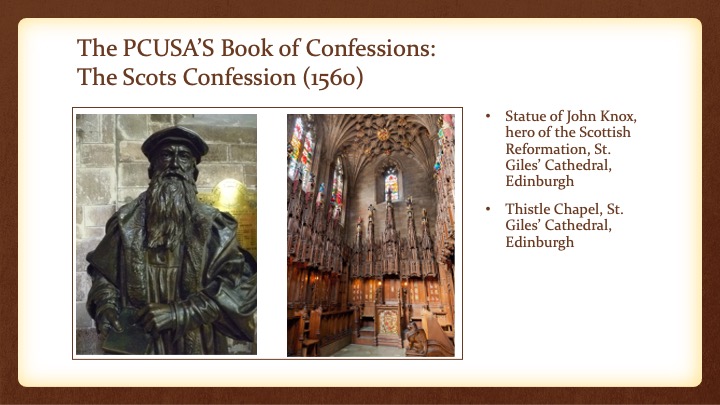
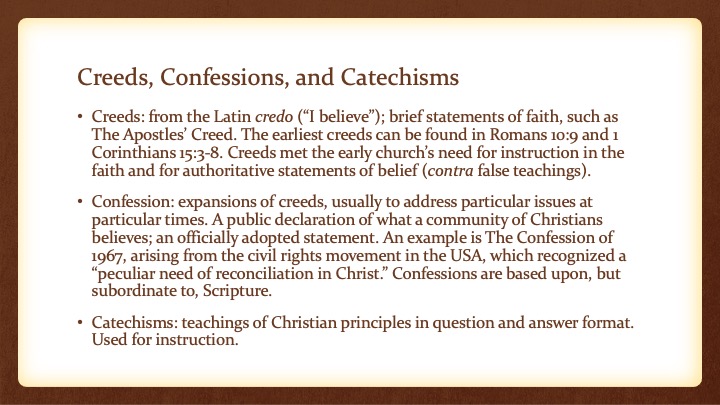
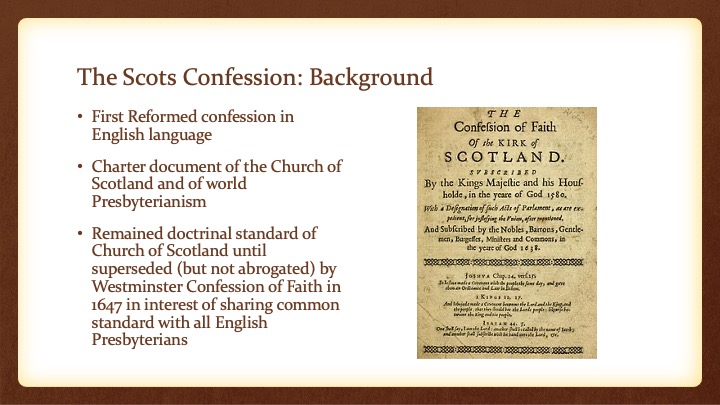
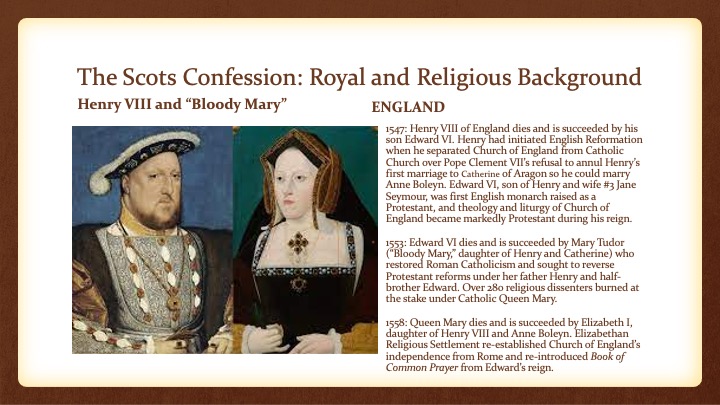
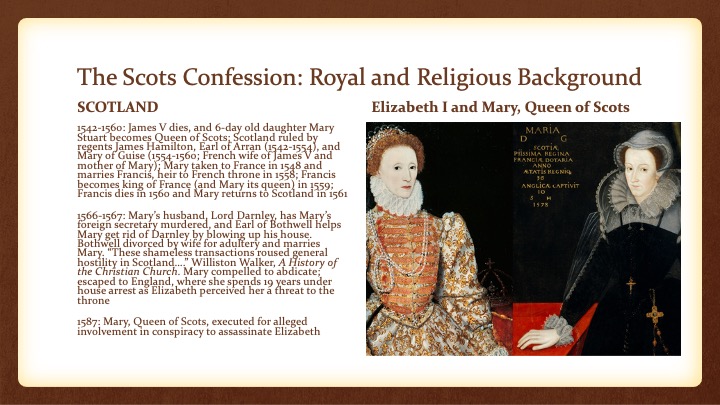
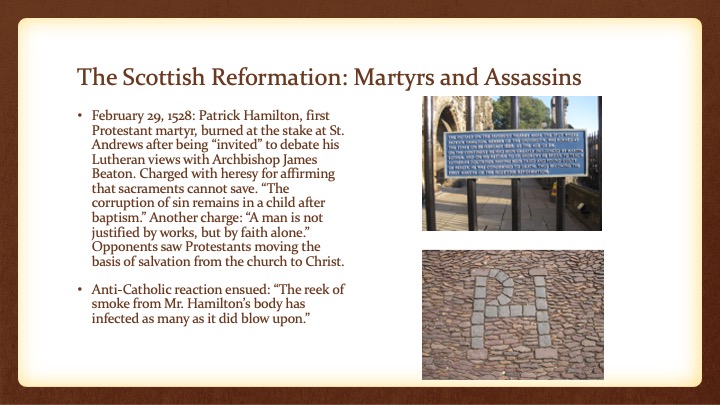
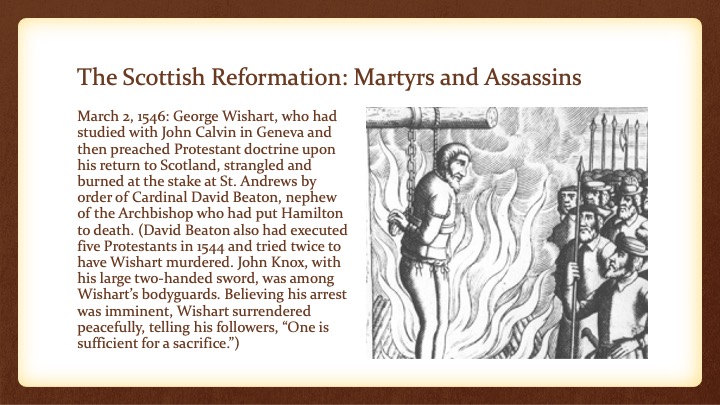
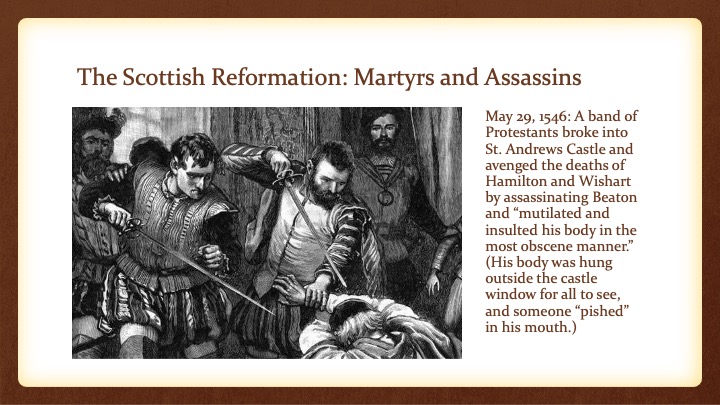
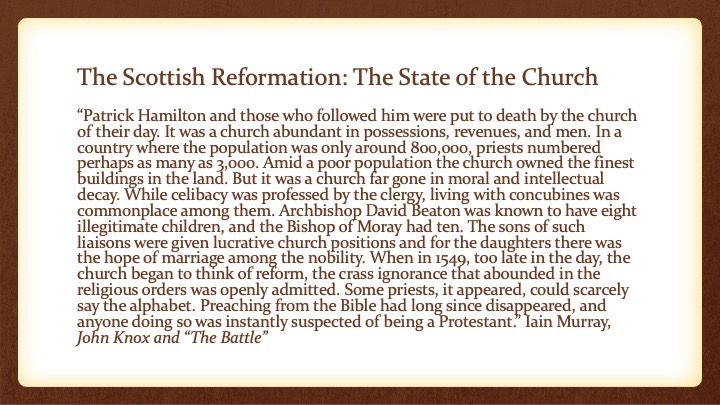
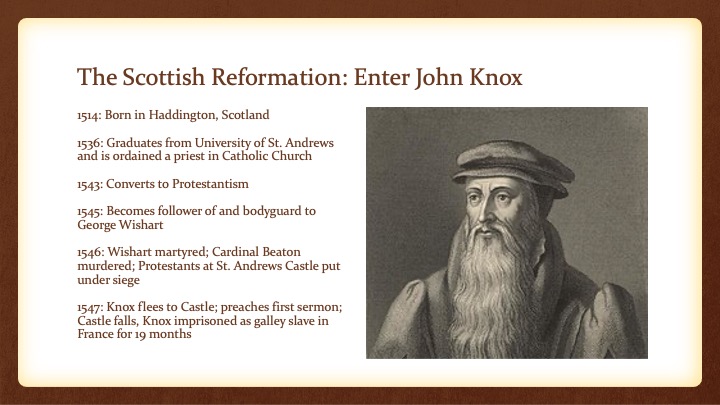
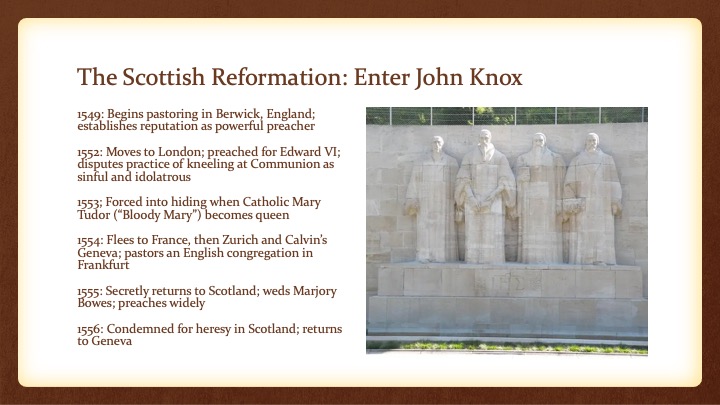
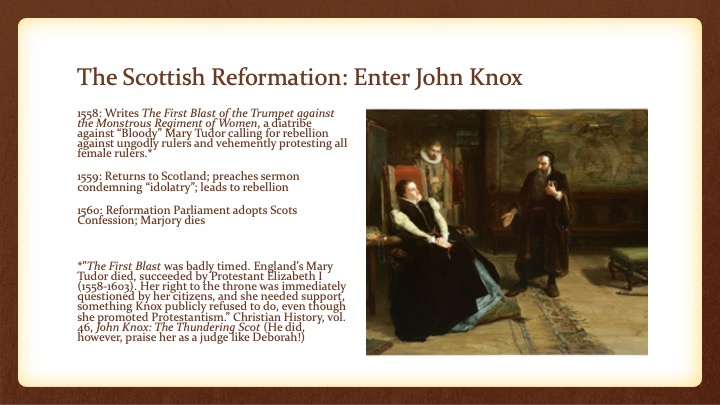
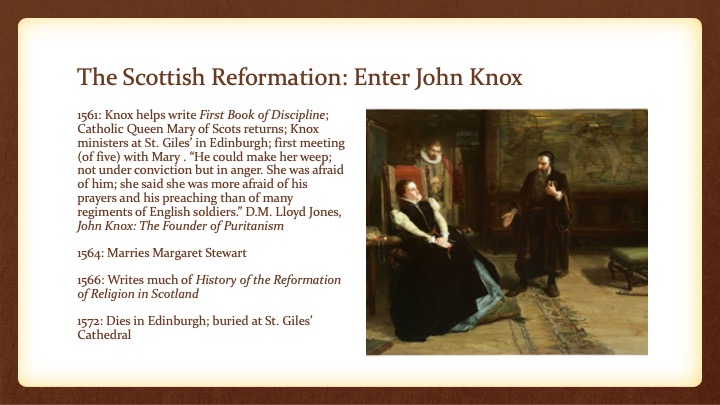
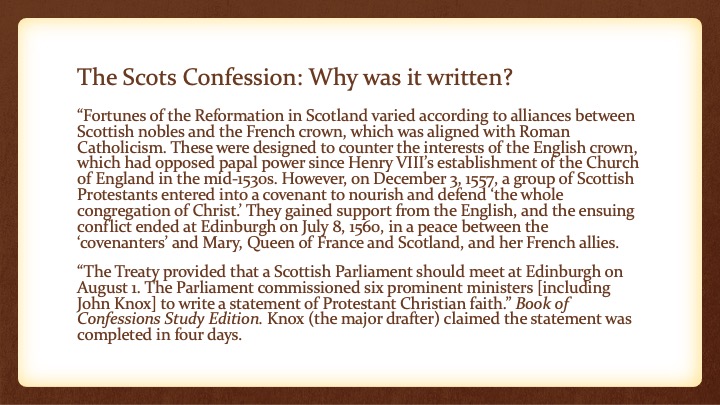
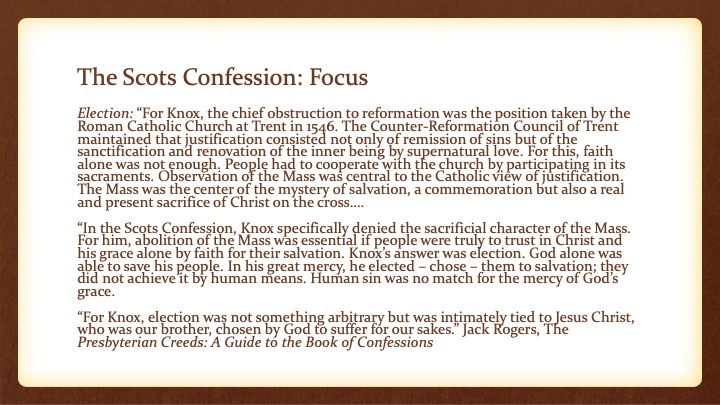
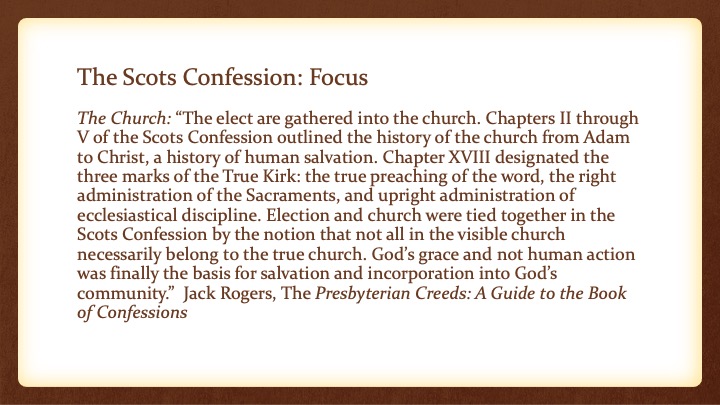
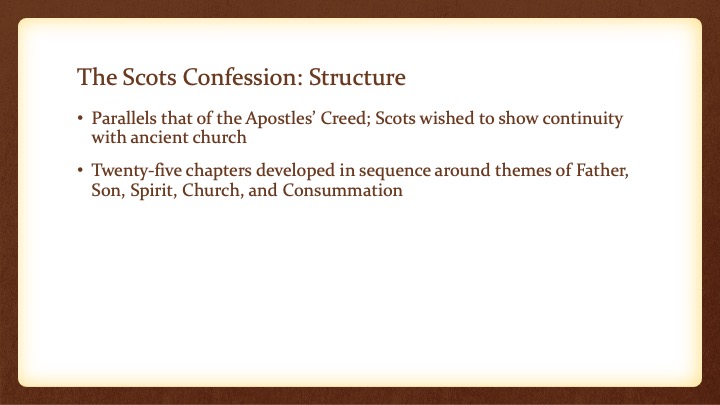
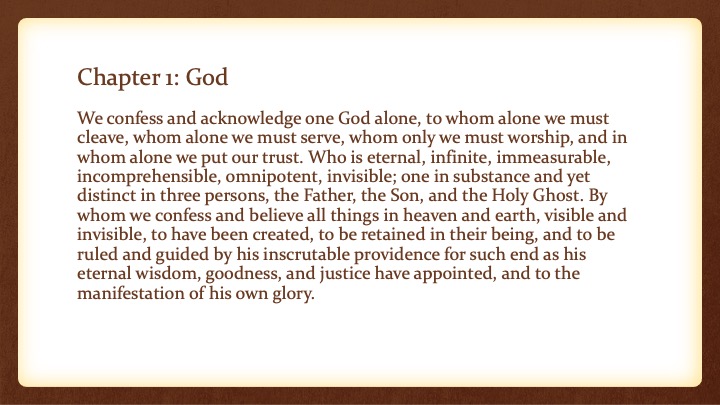
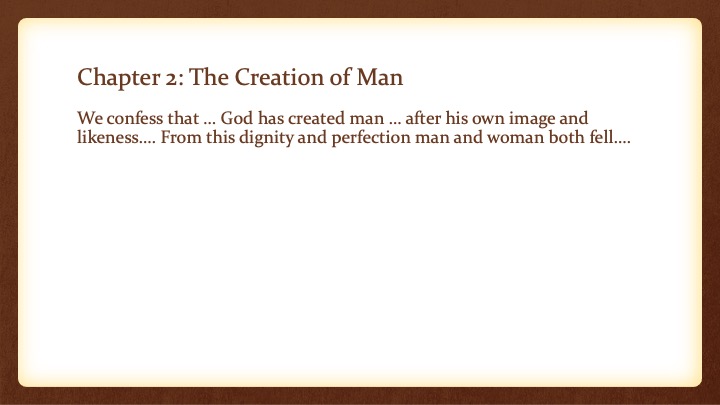
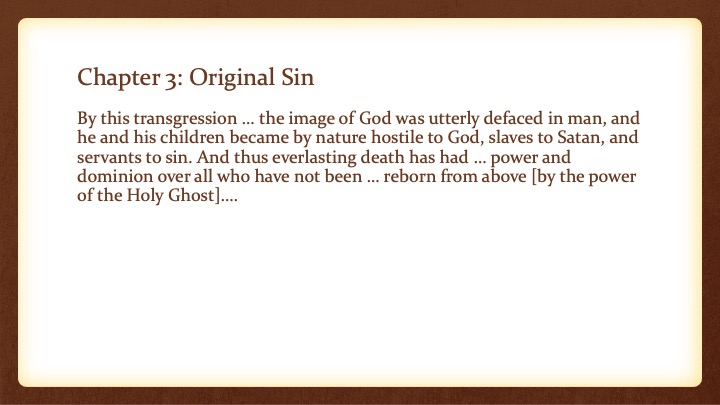
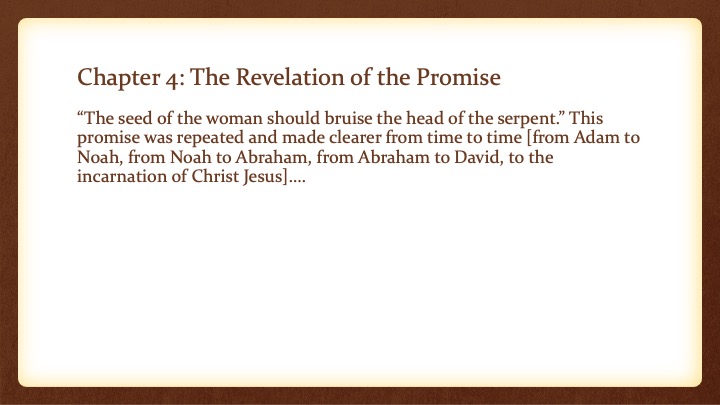
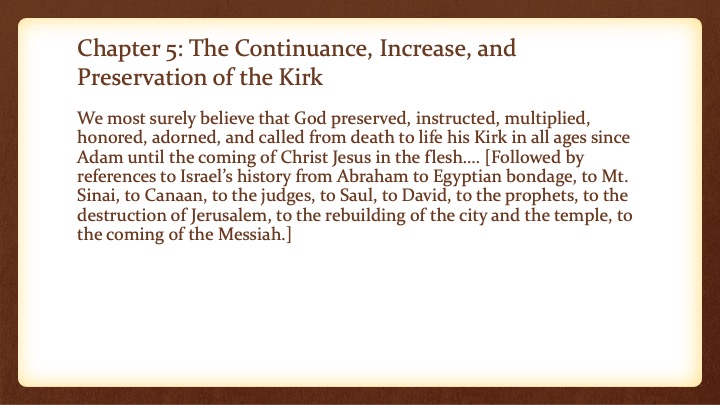
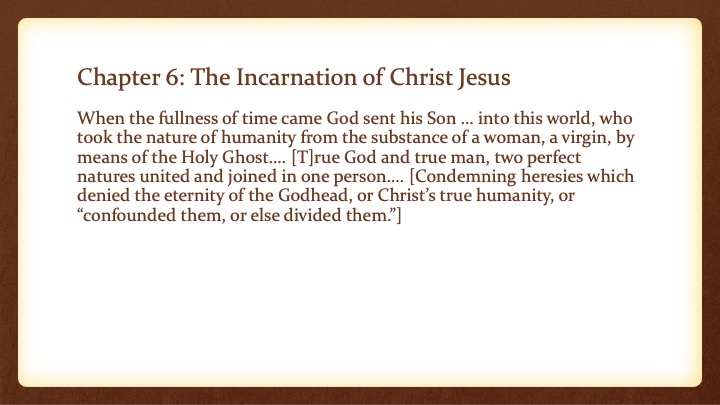
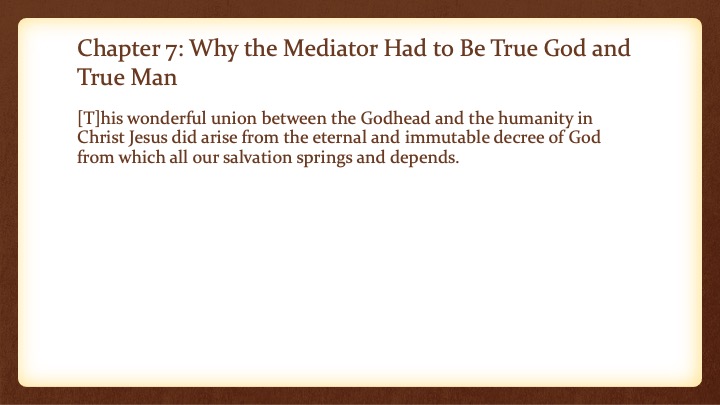
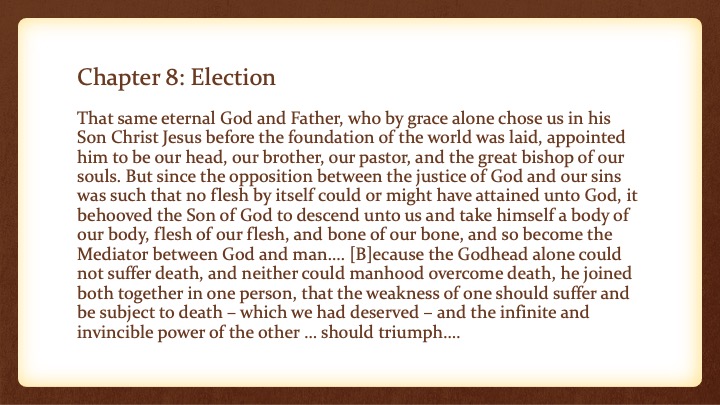
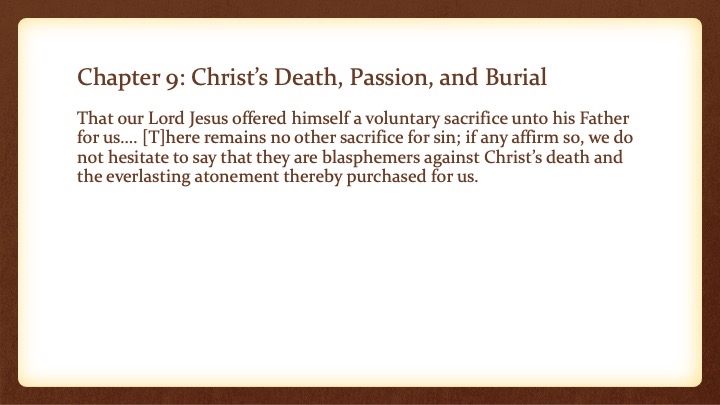
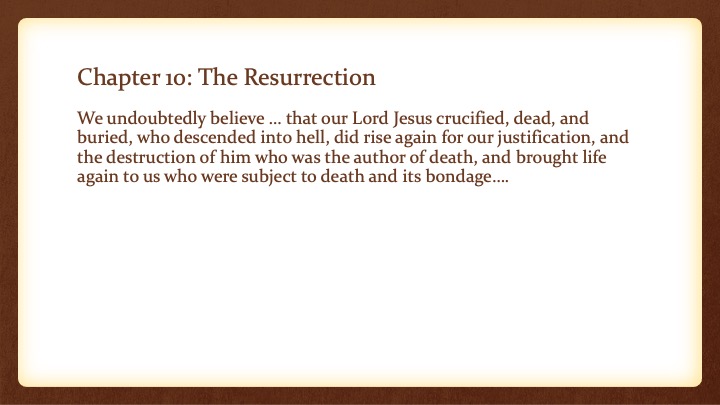
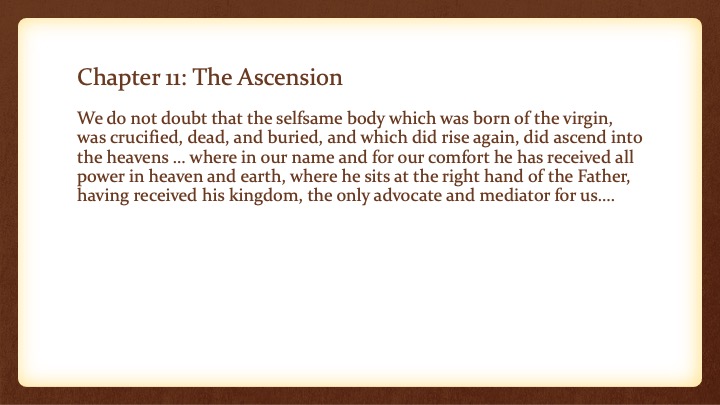
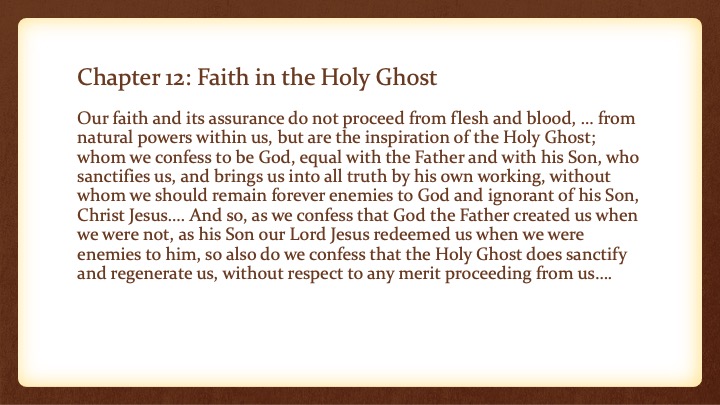
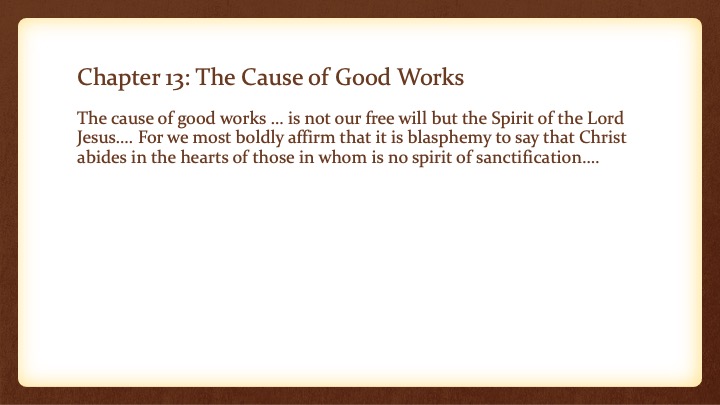
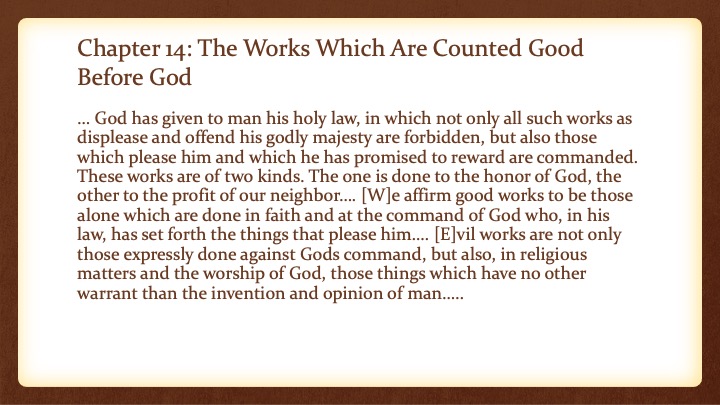
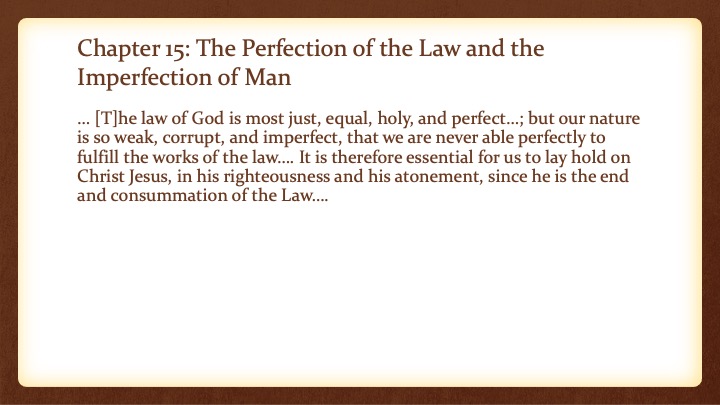
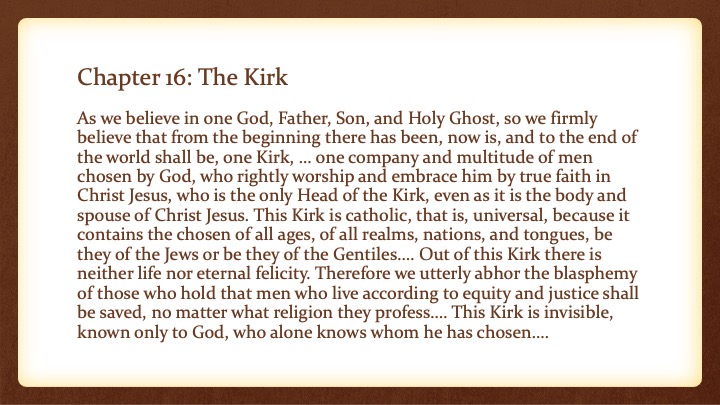
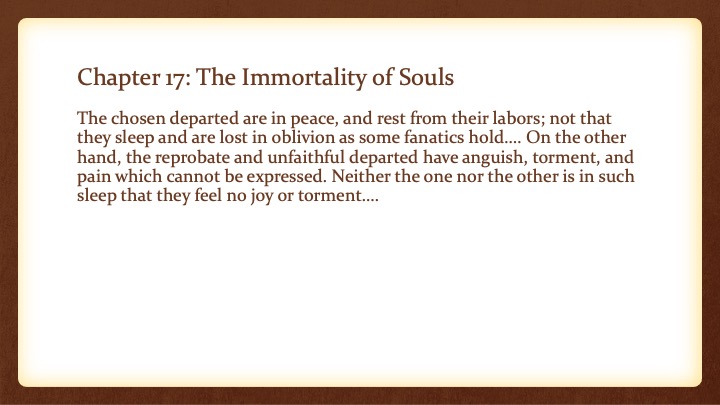
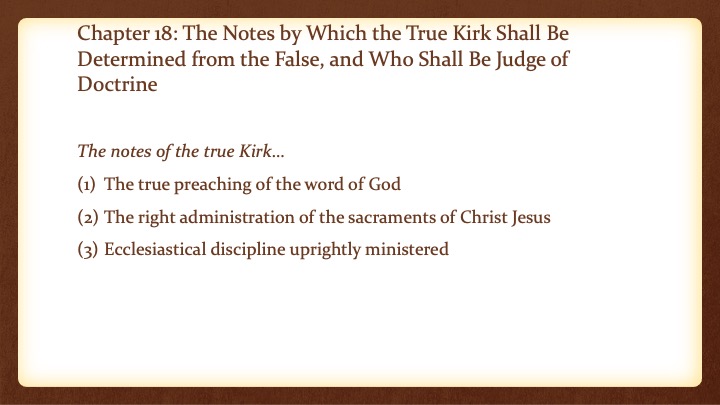
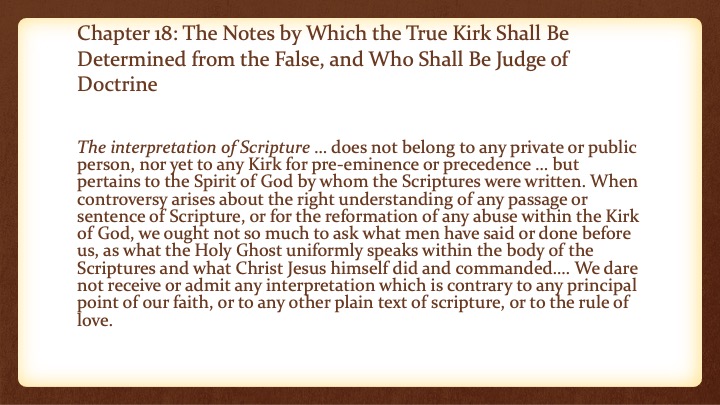
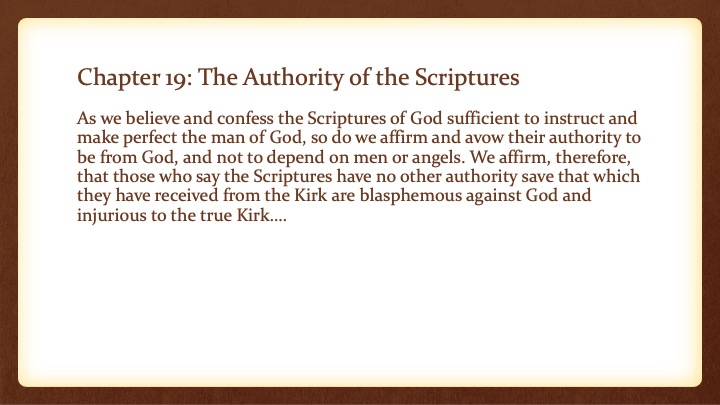
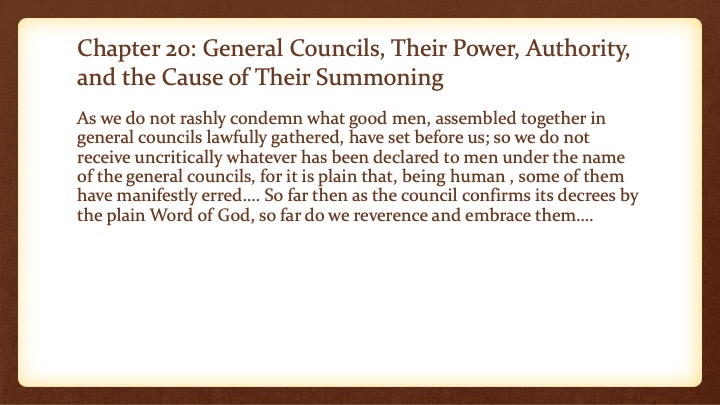
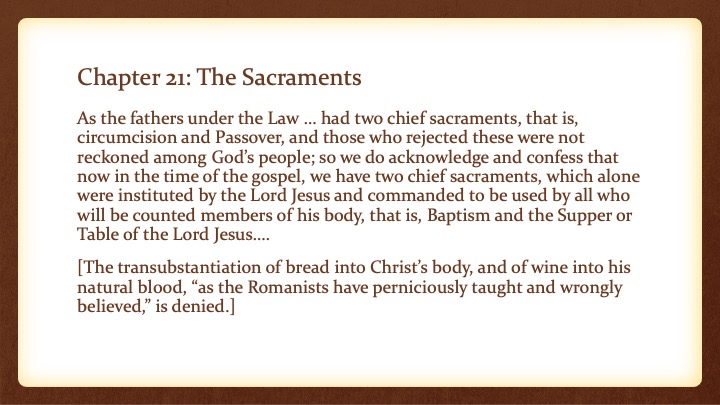
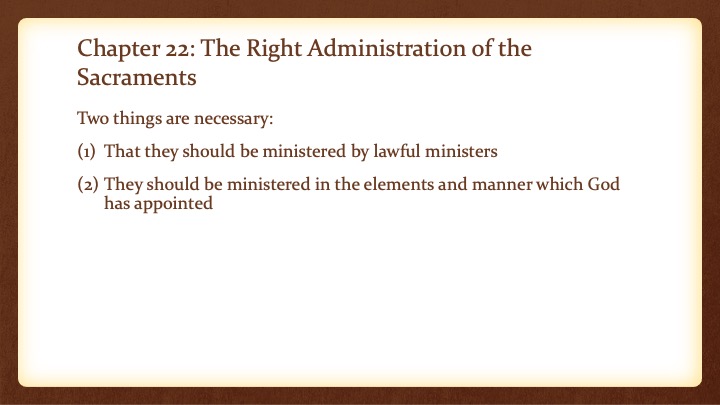
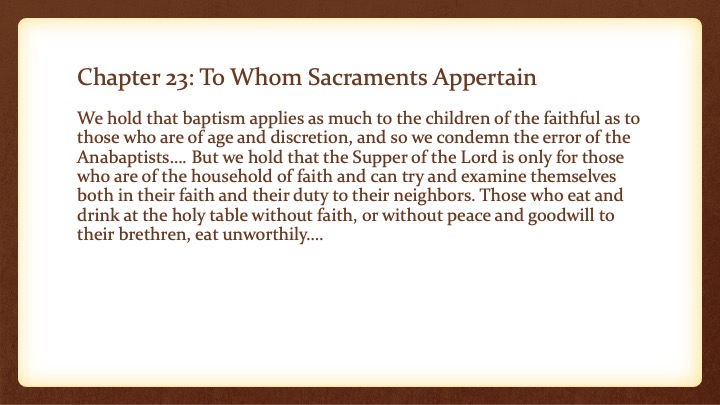
The PCUSA’S Book of Confessions:
The Scots Confession (1560)
Creeds, Confessions, and Catechisms
Creeds: from the Latin credo (“I believe”); brief statements of faith, such as The Apostles’ Creed. The earliest creeds can be found in Romans 10:9 and 1 Corinthians 15:3-8. Creeds met the early church’s need for instruction in the faith and for authoritative statements of belief (contra false teachings).
Confession: expansions of creeds, usually to address particular issues at particular times. A public declaration of what a community of Christians believes; an officially adopted statement. An example is The Confession of 1967, arising from the civil rights movement in the USA, which recognized a “peculiar need of reconciliation in Christ.” Confessions are based upon, but subordinate to, Scripture.
Catechisms: teachings of Christian principles in question and answer format. Used for instruction.
The Scots Confession: Background
First Reformed confession in English language
Charter document of the Church of Scotland and of world Presbyterianism
Remained doctrinal standard of Church of Scotland until superseded (but not abrogated) by Westminster Confession of Faith in 1647 in interest of sharing common standard with all English Presbyterians
The Scots Confession: Royal and Religious Background
Henry VIII and “Bloody Mary”. ENGLAND
1547: Henry VIII of England dies and is succeeded by his son Edward VI. Henry had initiated English Reformation when he separated Church of England from Catholic Church over Pope Clement VII’s refusal to annul Henry’s first marriage to Catherine of Aragon so he could marry Anne Boleyn. Edward VI, son of Henry and wife #3 Jane Seymour, was first English monarch raised as a Protestant, and theology and liturgy of Church of England became markedly Protestant during his reign.
1553: Edward VI dies and is succeeded by Mary Tudor (“Bloody Mary,” daughter of Henry and Catherine) who restored Roman Catholicism and sought to reverse Protestant reforms under her father Henry and half-brother Edward. Over 280 religious dissenters burned at the stake under Catholic Queen Mary.
1558: Queen Mary dies and is succeeded by Elizabeth I, daughter of Henry VIII and Anne Boleyn. Elizabethan Religious Settlement re-established Church of England’s independence from Rome and re-introduced Book of Common Prayer from Edward’s reign.
The Scots Confession: Royal and Religious Background
SCOTLAND
1542-1560: James V dies, and 6-day old daughter Mary Stuart becomes Queen of Scots; Scotland ruled by regents James Hamilton, Earl of Arran (1542-1554), and Mary of Guise (1554-1560; French wife of James V and mother of Mary); Mary taken to France in 1548 and marries Francis, heir to French throne in 1558; Francis becomes king of France (and Mary its queen) in 1559; Francis dies in 1560 and Mary returns to Scotland in 1561
1566-1567: Mary’s husband, Lord Darnley, has Mary’s foreign secretary murdered, and Earl of Bothwell helps Mary get rid of Darnley by blowing up his house. Bothwell divorced by wife for adultery and marries Mary. “These shameless transactions roused general hostility in Scotland….” Williston Walker, A History of the Christian Church. Mary compelled to abdicate; escaped to England, where she spends 19 years under house arrest as Elizabeth perceived her a threat to the throne
1587: Mary, Queen of Scots, executed for alleged involvement in conspiracy to assassinate Elizabeth
The Scottish Reformation: Martyrs and Assassins
February 29, 1528: Patrick Hamilton, first Protestant martyr, burned at the stake at St. Andrews after being “invited” to debate his Lutheran views with Archbishop James Beaton. Charged with heresy for affirming that sacraments cannot save. “The corruption of sin remains in a child after baptism.” Another charge: “A man is not justified by works, but by faith alone.” Opponents saw Protestants moving the basis of salvation from the church to Christ.
Anti-Catholic reaction ensued: “The reek of smoke from Mr. Hamilton’s body has infected as many as it did blow upon.”
The Scottish Reformation: Martyrs and Assassins
March 2, 1546: George Wishart, who had studied with John Calvin in Geneva and then preached Protestant doctrine upon his return to Scotland, strangled and burned at the stake at St. Andrews by order of Cardinal David Beaton, nephew of the Archbishop who had put Hamilton to death. (David Beaton also had executed five Protestants in 1544 and tried twice to have Wishart murdered. John Knox, with his large two-handed sword, was among Wishart’s bodyguards. Believing his arrest was imminent, Wishart surrendered peacefully, telling his followers, “One is sufficient for a sacrifice.”)
The Scottish Reformation: Martyrs and Assassins
May 29, 1546: A band of Protestants broke into St. Andrews Castle and avenged the deaths of Hamilton and Wishart by assassinating Beaton and “mutilated and insulted his body in the most obscene manner.” (His body was hung outside the castle window for all to see, and someone “pished” in his mouth.)
The Scottish Reformation: The State of the Church
“Patrick Hamilton and those who followed him were put to death by the church of their day. It was a church abundant in possessions, revenues, and men. In a country where the population was only around 800,000, priests numbered perhaps as many as 3,000. Amid a poor population the church owned the finest buildings in the land. But it was a church far gone in moral and intellectual decay. While celibacy was professed by the clergy, living with concubines was commonplace among them. Archbishop David Beaton was known to have eight illegitimate children, and the Bishop of Moray had ten. The sons of such liaisons were given lucrative church positions and for the daughters there was the hope of marriage among the nobility. When in 1549, too late in the day, the church began to think of reform, the crass ignorance that abounded in the religious orders was openly admitted. Some priests, it appeared, could scarcely say the alphabet. Preaching from the Bible had long since disappeared, and anyone doing so was instantly suspected of being a Protestant.” Iain Murray, John Knox and “The Battle”
The Scottish Reformation: Enter John Knox
1514: Born in Haddington, Scotland
1536: Graduates from University of St. Andrews and is ordained a priest in Catholic Church
1543: Converts to Protestantism
1545: Becomes follower of and bodyguard to George Wishart
1546: Wishart martyred; Cardinal Beaton murdered; Protestants at St. Andrews Castle put under siege
1547: Knox flees to Castle; preaches first sermon; Castle falls, Knox imprisoned as galley slave in France for 19 months
The Scottish Reformation: Enter John Knox
1549: Begins pastoring in Berwick, England; establishes reputation as powerful preacher
1552: Moves to London; preached for Edward VI; disputes practice of kneeling at Communion as sinful and idolatrous
1553; Forced into hiding when Catholic Mary Tudor (“Bloody Mary”) becomes queen
1554: Flees to France, then Zurich and Calvin’s Geneva; pastors an English congregation in Frankfurt
1555: Secretly returns to Scotland; weds Marjory Bowes; preaches widely
1556: Condemned for heresy in Scotland; returns to Geneva
The Scottish Reformation: Enter John Knox
1558: Writes The First Blast of the Trumpet against the Monstrous Regiment of Women, a diatribe against “Bloody” Mary Tudor calling for rebellion against ungodly rulers and vehemently protesting all female rulers.*
1559: Returns to Scotland; preaches sermon condemning “idolatry”; leads to rebellion
1560: Reformation Parliament adopts Scots Confession; Marjory dies
*”The First Blast was badly timed. England’s Mary Tudor died, succeeded by Protestant Elizabeth I (1558-1603). Her right to the throne was immediately questioned by her citizens, and she needed support, something Knox publicly refused to do, even though she promoted Protestantism.” Christian History, vol. 46, John Knox: The Thundering Scot (He did, however, praise her as a judge like Deborah!)
The Scottish Reformation: Enter John Knox
1561: Knox helps write First Book of Discipline; Catholic Queen Mary of Scots returns; Knox ministers at St. Giles’ in Edinburgh; first meeting (of five) with Mary . “He could make her weep; not under conviction but in anger. She was afraid of him; she said she was more afraid of his prayers and his preaching than of many regiments of English soldiers.” D.M. Lloyd Jones, John Knox: The Founder of Puritanism
1564: Marries Margaret Stewart
1566: Writes much of History of the Reformation of Religion in Scotland
1572: Dies in Edinburgh; buried at St. Giles’ Cathedral
The Scots Confession: Why was it written?
“Fortunes of the Reformation in Scotland varied according to alliances between Scottish nobles and the French crown, which was aligned with Roman Catholicism. These were designed to counter the interests of the English crown, which had opposed papal power since Henry VIII’s establishment of the Church of England in the mid-1530s. However, on December 3, 1557, a group of Scottish Protestants entered into a covenant to nourish and defend ‘the whole congregation of Christ.’ They gained support from the English, and the ensuing conflict ended at Edinburgh on July 8, 1560, in a peace between the ‘covenanters’ and Mary, Queen of France and Scotland, and her French allies.
“The Treaty provided that a Scottish Parliament should meet at Edinburgh on August 1. The Parliament commissioned six prominent ministers [including John Knox] to write a statement of Protestant Christian faith.” Book of Confessions Study Edition. Knox (the major drafter) claimed the statement was completed in four days.
The Scots Confession: Why was it written?
“Fortunes of the Reformation in Scotland varied according to alliances between Scottish nobles and the French crown, which was aligned with Roman Catholicism. These were designed to counter the interests of the English crown, which had opposed papal power since Henry VIII’s establishment of the Church of England in the mid-1530s. However, on December 3, 1557, a group of Scottish Protestants entered into a covenant to nourish and defend ‘the whole congregation of Christ.’ They gained support from the English, and the ensuing conflict ended at Edinburgh on July 8, 1560, in a peace between the ‘covenanters’ and Mary, Queen of France and Scotland, and her French allies.
“The Treaty provided that a Scottish Parliament should meet at Edinburgh on August 1. The Parliament commissioned six prominent ministers [including John Knox] to write a statement of Protestant Christian faith.” Book of Confessions Study Edition. Knox (the major drafter) claimed the statement was completed in four days.
The Scots Confession: Focus
The Presbyterian Church in Scotland held to the Apostles’ Creed but devised this further explanation of the church’s belief to clarify points which the Roman Catholic Church had obscured or confused.
From Knox’s Preface to the Scots Confession: “Long have we thirsted, dear brethren, to make known to the world the sum of that doctrine which we profess and for which we have sustained infamy and danger. But such has been the rage of Satan against us, and against Jesus Christ’s eternal verity, lately now born again among us, that to this day no time has been granted to us to clear our consciences, as most gladly we would have done. For how we have been tossed about until now the most part of Europe, we suppose, understands.”
The Scots Confession: Focus
Election: “For Knox, the chief obstruction to reformation was the position taken by the Roman Catholic Church at Trent in 1546. The Counter-Reformation Council of Trent maintained that justification consisted not only of remission of sins but of the sanctification and renovation of the inner being by supernatural love. For this, faith alone was not enough. People had to cooperate with the church by participating in its sacraments. Observation of the Mass was central to the Catholic view of justification. The Mass was the center of the mystery of salvation, a commemoration but also a real and present sacrifice of Christ on the cross….
“In the Scots Confession, Knox specifically denied the sacrificial character of the Mass. For him, abolition of the Mass was essential if people were truly to trust in Christ and his grace alone by faith for their salvation. Knox’s answer was election. God alone was able to save his people. In his great mercy, he elected – chose – them to salvation; they did not achieve it by human means. Human sin was no match for the mercy of God’s grace.
“For Knox, election was not something arbitrary but was intimately tied to Jesus Christ, who was our brother, chosen by God to suffer for our sakes.” Jack Rogers, The Presbyterian Creeds: A Guide to the Book of Confessions
The Scots Confession: Focus
The Church: “The elect are gathered into the church. Chapters II through V of the Scots Confession outlined the history of the church from Adam to Christ, a history of human salvation. Chapter XVIII designated the three marks of the True Kirk: the true preaching of the word, the right administration of the Sacraments, and upright administration of ecclesiastical discipline. Election and church were tied together in the Scots Confession by the notion that not all in the visible church necessarily belong to the true church. God’s grace and not human action was finally the basis for salvation and incorporation into God’s community.” Jack Rogers, The Presbyterian Creeds: A Guide to the Book of Confessions
The Scots Confession: Structure
Parallels that of the Apostles’ Creed; Scots wished to show continuity with ancient church
Twenty-five chapters developed in sequence around themes of Father, Son, Spirit, Church, and Consummation
Chapter 1: God
We confess and acknowledge one God alone,
to whom alone we must cleave, whom alone we must serve, whom only we must
worship, and in whom alone we put our trust. Who is eternal, infinite,
immeasurable, incomprehensible, omnipotent, invisible; one in substance and yet
distinct in three persons, the Father, the Son, and the Holy Ghost. By whom we confess and believe all
things in heaven and earth, visible and invisible, to have been created, to be
retained in their being, and to be ruled and guided by his inscrutable
providence for such end as his eternal wisdom, goodness, and justice have
appointed, and to the manifestation of his own glory.
Chapter 2: The Creation of Man
We confess that … God has created man … after his own image and likeness…. From this dignity and perfection man and woman both fell….
Chapter 3: Original Sin
By this transgression … the image of God was utterly defaced in man, and he and his children became by nature hostile to God, slaves to Satan, and servants to sin. And thus everlasting death has had … power and dominion over all who have not been … reborn from above [by the power of the Holy Ghost]….
Chapter 4: The Revelation of the Promise
“The seed of the woman should bruise the head of the serpent.” This promise was repeated and made clearer from time to time [from Adam to Noah, from Noah to Abraham, from Abraham to David, to the incarnation of Christ Jesus]….
Chapter 5: The Continuance, Increase, and Preservation of the Kirk
We most surely believe that God preserved, instructed, multiplied, honored, adorned, and called from death to life his Kirk in all ages since Adam until the coming of Christ Jesus in the flesh…. [Followed by references to Israel’s history from Abraham to Egyptian bondage, to Mt. Sinai, to Canaan, to the judges, to Saul, to David, to the prophets, to the destruction of Jerusalem, to the rebuilding of the city and the temple, to the coming of the Messiah.]
Chapter 6: The Incarnation of Christ Jesus
When the fullness of time came God sent his Son … into this world, who took the nature of humanity from the substance of a woman, a virgin, by means of the Holy Ghost…. [T]rue God and true man, two perfect natures united and joined in one person…. [Condemning heresies which denied the eternity of the Godhead, or Christ’s true humanity, or “confounded them, or else divided them.”]
Chapter 7: Why the Mediator Had to Be True God and True Man
[T]his wonderful union between the Godhead and the humanity in Christ Jesus did arise from the eternal and immutable decree of God from which all our salvation springs and depends.
Chapter 8: Election
That same eternal God and Father, who by grace alone chose us in his Son Christ Jesus before the foundation of the world was laid, appointed him to be our head, our brother, our pastor, and the great bishop of our souls. But since the opposition between the justice of God and our sins was such that no flesh by itself could or might have attained unto God, it behooved the Son of God to descend unto us and take himself a body of our body, flesh of our flesh, and bone of our bone, and so become the Mediator between God and man…. [B]ecause the Godhead alone could not suffer death, and neither could manhood overcome death, he joined both together in one person, that the weakness of one should suffer and be subject to death – which we had deserved – and the infinite and invincible power of the other … should triumph….
Chapter 9: Christ’s Death, Passion, and Burial
That our Lord Jesus offered himself a voluntary sacrifice unto his Father for us…. [T]here remains no other sacrifice for sin; if any affirm so, we do not hesitate to say that they are blasphemers against Christ’s death and the everlasting atonement thereby purchased for us.
Chapter 10: The Resurrection
We undoubtedly believe … that our Lord Jesus crucified, dead, and buried, who descended into hell, did rise again for our justification, and the destruction of him who was the author of death, and brought life again to us who were subject to death and its bondage….
Chapter 11: The Ascension
We do not doubt that the selfsame body which was born of the virgin, was crucified, dead, and buried, and which did rise again, did ascend into the heavens … where in our name and for our comfort he has received all power in heaven and earth, where he sits at the right hand of the Father, having received his kingdom, the only advocate and mediator for us….
Chapter 12: Faith in the Holy Ghost
Our faith and its assurance do not proceed from flesh and blood, … from natural powers within us, but are the inspiration of the Holy Ghost; whom we confess to be God, equal with the Father and with his Son, who sanctifies us, and brings us into all truth by his own working, without whom we should remain forever enemies to God and ignorant of his Son, Christ Jesus…. And so, as we confess that God the Father created us when we were not, as his Son our Lord Jesus redeemed us when we were enemies to him, so also do we confess that the Holy Ghost does sanctify and regenerate us, without respect to any merit proceeding from us….
Chapter 13: The Cause of Good Works
The cause of good works … is not our free will but the Spirit of the Lord Jesus…. For we most boldly affirm that it is blasphemy to say that Christ abides in the hearts of those in whom is no spirit of sanctification….
Chapter 14: The Works Which Are Counted Good Before God
… God has given to man his holy law, in which not only all such works as displease and offend his godly majesty are forbidden, but also those which please him and which he has promised to reward are commanded. These works are of two kinds. The one is done to the honor of God, the other to the profit of our neighbor…. [W]e affirm good works to be those alone which are done in faith and at the command of God who, in his law, has set forth the things that please him…. [E]vil works are not only those expressly done against Gods command, but also, in religious matters and the worship of God, those things which have no other warrant than the invention and opinion of man…..
Chapter 15: The Perfection of the Law and the Imperfection of Man
… [T]he law of God is most just, equal, holy, and perfect…; but our nature is so weak, corrupt, and imperfect, that we are never able perfectly to fulfill the works of the law…. It is therefore essential for us to lay hold on Christ Jesus, in his righteousness and his atonement, since he is the end and consummation of the Law….
Chapter 16: The Kirk
As we believe in one God, Father, Son, and Holy Ghost, so we firmly believe that from the beginning there has been, now is, and to the end of the world shall be, one Kirk, … one company and multitude of men chosen by God, who rightly worship and embrace him by true faith in Christ Jesus, who is the only Head of the Kirk, even as it is the body and spouse of Christ Jesus. This Kirk is catholic, that is, universal, because it contains the chosen of all ages, of all realms, nations, and tongues, be they of the Jews or be they of the Gentiles…. Out of this Kirk there is neither life nor eternal felicity. Therefore we utterly abhor the blasphemy of those who hold that men who live according to equity and justice shall be saved, no matter what religion they profess…. This Kirk is invisible, known only to God, who alone knows whom he has chosen….
Chapter 17: The Immortality of Souls
The chosen departed are in peace, and rest from their labors; not that they sleep and are lost in oblivion as some fanatics hold…. On the other hand, the reprobate and unfaithful departed have anguish, torment, and pain which cannot be expressed. Neither the one nor the other is in such sleep that they feel no joy or torment….
Chapter 18: The Notes by Which the True Kirk Shall Be Determined from the False, and Who Shall Be Judge of Doctrine
The notes of the true Kirk…
(1)The true preaching of the word of God
(2)The right administration of the sacraments of Christ Jesus
(3)Ecclesiastical discipline uprightly ministered
Chapter 18: The Notes by Which the True Kirk Shall Be Determined from the False, and Who Shall Be Judge of Doctrine
The interpretation of Scripture … does not belong to any private or public person, nor yet to any Kirk for pre-eminence or precedence … but pertains to the Spirit of God by whom the Scriptures were written. When controversy arises about the right understanding of any passage or sentence of Scripture, or for the reformation of any abuse within the Kirk of God, we ought not so much to ask what men have said or done before us, as what the Holy Ghost uniformly speaks within the body of the Scriptures and what Christ Jesus himself did and commanded…. We dare not receive or admit any interpretation which is contrary to any principal point of our faith, or to any other plain text of scripture, or to the rule of love.
Chapter 19: The Authority of the Scriptures
As we believe and confess the Scriptures of God sufficient to instruct and make perfect the man of God, so do we affirm and avow their authority to be from God, and not to depend on men or angels. We affirm, therefore, that those who say the Scriptures have no other authority save that which they have received from the Kirk are blasphemous against God and injurious to the true Kirk….
Chapter 20: General Councils, Their Power, Authority, and the Cause of Their Summoning
As we do not rashly condemn what good men, assembled together in general councils lawfully gathered, have set before us; so we do not receive uncritically whatever has been declared to men under the name of the general councils, for it is plain that, being human , some of them have manifestly erred…. So far then as the council confirms its decrees by the plain Word of God, so far do we reverence and embrace them….
Chapter 21: The Sacraments
As the fathers under the Law … had two chief sacraments, that is, circumcision and Passover, and those who rejected these were not reckoned among God’s people; so we do acknowledge and confess that now in the time of the gospel, we have two chief sacraments, which alone were instituted by the Lord Jesus and commanded to be used by all who will be counted members of his body, that is, Baptism and the Supper or Table of the Lord Jesus….
[The transubstantiation of bread into Christ’s body, and of wine into his natural blood, “as the Romanists have perniciously taught and wrongly believed,” is denied.]
Chapter 22: The Right Administration of the Sacraments
Two things are necessary:
(1)That they should be ministered by lawful ministers
(2)They should be ministered in the elements and manner which God has appointed
Chapter 23: To Whom Sacraments Appertain
We hold that baptism applies as much to the children of the faithful as to those who are of age and discretion, and so we condemn the error of the Anabaptists…. But we hold that the Supper of the Lord is only for those who are of the household of faith and can try and examine themselves both in their faith and their duty to their neighbors. Those who eat and drink at the holy table without faith, or without peace and goodwill to their brethren, eat unworthily….
Chapter 24: The Civil Magistrate
We confess … that empires, kingdoms, dominions, and cities are appointed and ordained by God…. We hold that any men who conspire to rebel or to overturn the civil powers, as duly established, are not merely enemies to humanity but rebels against God’s will…..
Chapter 25: The Gifts Freely Given to the Kirk
… [S]uch as unfeignedly believe with the heart and boldly confess the Lord Jesus with their mouths shall certainly receive his gifts:
(1)In this life, the remission of sins
(2)In the general judgment, resurrection of the flesh to glory
Chapter 25: The Gifts Freely Given to the Kirk
… [S]uch as unfeignedly believe with the heart and boldly confess the Lord Jesus with their mouths shall certainly receive his gifts:
(1)In this life, the remission of sins
(2)In the general judgment, resurrection of the flesh to glory
THE END - THANK YOU.